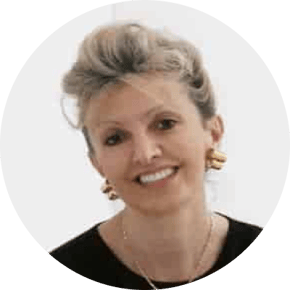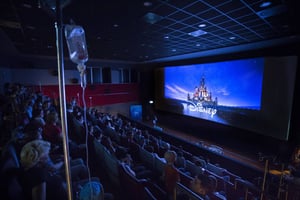Cinema as a means of rehabilitation for caregivers, from a recent study undertaken during the pandemic.
A project got underway in the UK in 1996, entitled MediCinema - Feel Better with Film. A quarter of a century later, a study conducted in hospitals clarifies its cultural and therapeutic value.
Positive activation of patients and carers lessens distress caused by illness, and can help foster acceptance of conventional forms of treatment and their effectiveness.
Watching films that have been carefully selected, in a cutting-edge technological cinema, even if located inside a hospital, affords benefits as a result of socialising and sharing an experience with people in similar difficult circumstances.
Darkness promotes concentration and focuses the emotions. An opportunity to enjoy a carefree experience promotes escapism and gives comfort, helping individuals distance themselves, and adopt a positive mind-frame. It also stimulates empathic processes and interpretation of emotions both inside and outside the self. A number of experimental studies (neurocinematics) have actually documented the theory from the standpoint of the neuronal impact, gauging the biological effect of viewing moving images.
Based on this model, MediCinema Italia started operating in 2013, with a social project offering patients the chance to watch newly released films for free. It is a part of the hospital ecosystem, and is organised in conjunction with the hosting hospitals. To date these are Milan’s ASST Grande Ospedale Metropolitano Niguarda, and Policlinico Gemelli in Rome.
The benefits are felt by carers, professionals and family members alike, enhancing relationships within the hospital and its organisational climate.
Benefits for carers can also be felt in day-to-day life. The importance of cinetherapy for managing burdens has been highlighted in a recent study entitled “Cinema as a rehabilitation technique: intervention on caregivers and patients with cognitive deterioration” by Medicinema Italia Onlus, a charitable organisation backed by Fondazione Gnocchi, with the Cognitive Neuropsychology Centre of the Niguarda Hospital.
What is a “burden”?
“Assisting a family member with a disability calls for time and energy. Often it leads to social isolation and stress, and can become a burden, which is a fully-fledged pathological condition,” explains Prof. Gabriella Bottini, neurologist and lecturer in Cognitive Neuroscience at the Neuroscience and Society LabDepartment of Brain and Behavioral Sciences (DBBS) of Pavia University, and the Head of the Centre itself.
“A burden is the weight the assisting person experiences in response to changes of a cognitive and behavioural kind in the unwell family member. It can affect the social or economic sphere, as well as generating physical and/or emotive and psychological fatigue. It can even result in a condition of “early bereavement” caused by the loss of the relationship with the patient”.
Who are caregivers, and what is their role?
Caregivers are members of the patient’s family. They have an average age of 59.2 years, and 70 % are women, usually daughters (64.2% for female patients). There has recently been an increase in the numbers of caregivers who are the patients’ partners (37%) particularly when the sick person is a man. It has been estimated that there are around 3 million caregivers in Italy who are either directly or indirectly involved in giving assistance.
Broadly speaking, caregiving directly takes up 7 hours a day, and 11 hours of general supervision. 66% of caregivers have had to give up their jobs, 10% asked for a part-time position, whilst 37.2%, women in particular, state that they are repeatedly forced to miss work.
As one might expect, their circumstances mean that caregivers are subject to financial, social, economic, physical and emotive burdens. In particular, in terms of health problems (particularly for women) they suffer from the following: tiredness (80.3%), lack of sleep (63.2%), depression (45.3%), and frequent sickness (26.1%). There are instruments designed to gauge this burden, such as the Caregiver Burden Inventory or Caregiver Grief Questionnaire.
In terms of the economic burden, it has been estimated that leaving one’s job occurs in 66% of cases, part-time hours are requested in 10% of cases, and repeat absences from work in 37.2%.
Treatment with cinetherapy
Research into cinetherapy has been given to patients suffering from neurodegenerative diseases, and to their caregivers.
The therapist (or counsellor) identifies one or more films to show on a regular basis and engages in conversations with carers in order to help them reflect on their problems.
50 short films were made for the purposes of this study. Lasting around 10 minutes each, they feature footage from the Cineteca Italiana film archive. In order to achieve an effective statistical evaluation, short films with a positive emotive impact were selected, along with neutral short films. These were then shown in three sessions on a weekly basis to 50 healthy individuals, who were selected at random from a sample of the population.
In each session, information about the emotive state of the participants was gathered using scales for assessing depression and anxiety levels. To evaluate the films, the study adopted the same method as that used by Lang and colleagues for standardising sound and visual stimuli.
The Self-Assessment Manikin - SAM (Lang, 1980; Bradley & Lang, 1994) was used for affective assessment.
Viewing films as a means of psychological support during confinement
The medical emergency created by the pandemic has rendered it necessary to remodulate and even suspend a number of social and health-related services. Medicinema Italia has instead continued its work remotely, testing its effect by means of the Zoom platform, amongst others, because “The situation has become worse still with confinement,” as Prof. Bottini explains. “On the one hand, the number of patients who are on their own has increased, be it because of contagion or the loss of relatives, so other non-cohabiting family members need guidance on how to coordinate assistance remotely. On the other hand, territorial and social and medical services were suspended, particularly in the first few months of the year, and this subjected caregivers who are partners of patients to even stricter limitations, forcing them to live in even closer contact with the sick person. This change in routine and the resulting isolation have triggered a staggering increase in behavioural ailments, and a worsening in basic autonomy and functional capacities.”
The adoption of remote forms of support has made it possible to limit the risk of the assistance being interrupted. Out of 165 people accessing the service, 114 were trying it for the first time. There was also an increase in caregivers using the service more than once.
The restrictions imposed by isolation have also changed the nature of requests made by users, which are increasingly varied.
Demand for psychological support has almost doubled on figures for the same period last year (32% in 2019 vs 53% in 2020), highlighting the importance of offering structured forms of support with a social approach.
Processes for humanising treatment have this year become an even more vital resource for family members.
In fact, the need for family members to have someone to talk to, and to receive psychological support to limit the burden of stress caused by caring on a daily basis for a family member with disabilities, is constantly on the rise.
“The preliminary results of this project seem encouraging. Without doubt, they mark the start of a process for researching how to create scientific protocols that govern how these instruments are used for treatment purposes, inspired by complex models that incorporate social elements into therapy and assistance."
A cura di Catterina Seia

